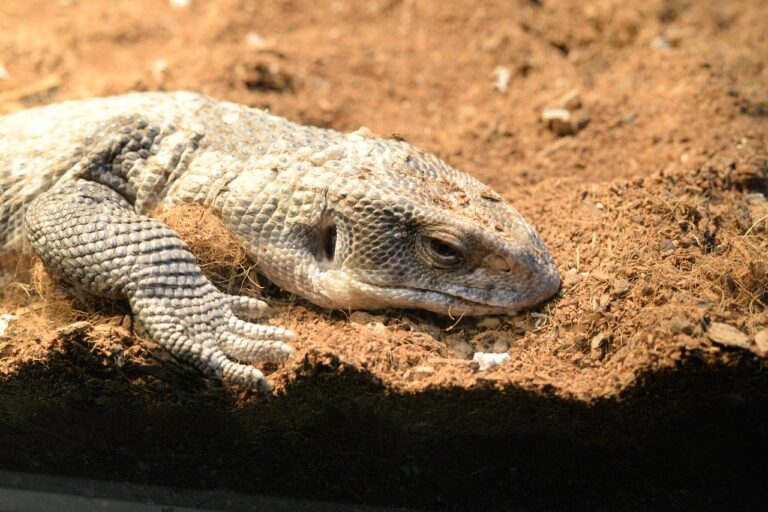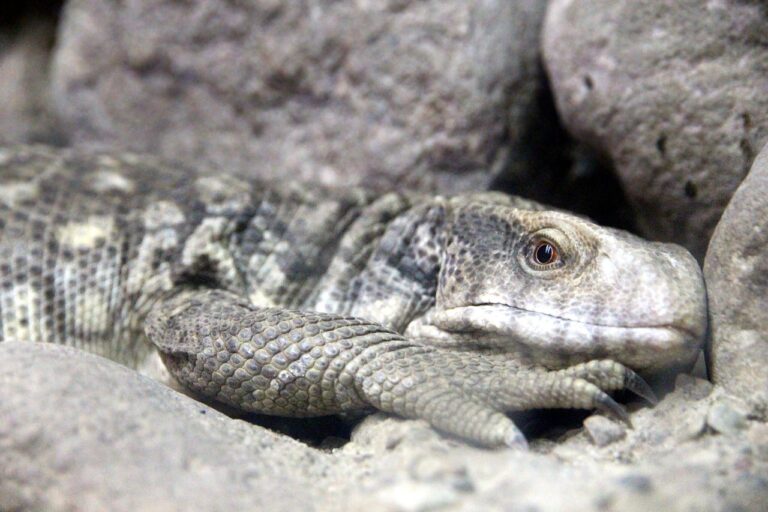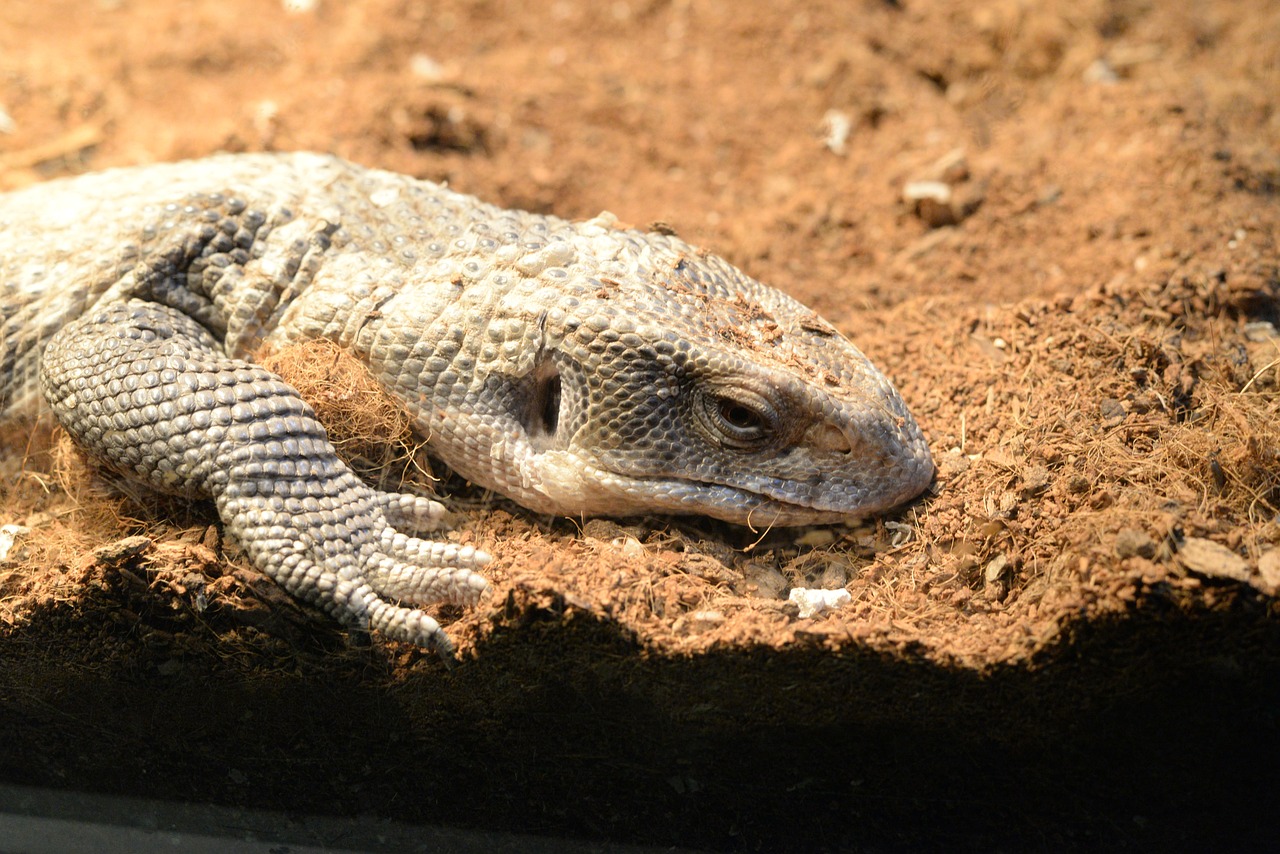Savannah monitors (Varanus exanthematicus) are powerful, intelligent, and very fascinating reptiles. They originated from the hot savannahs and grasslands of sub-Saharan Africa. Most reptile keepers keep them as pets because they are robust, playful, and easier to handle than bigger lizards such as Nile monitors.
These are vigilant and inquisitive lizards. Some even become accustomed to their owners and like to explore their environment. Although they are not cuddly companions, they can be entertaining to watch and play with. Their behavior—such as digging, climbing, and even swimming at times—make them interesting pets to own.
But it is not as simple as it seems to own a Savannah monitor. They are special animals. They require a large space to call home, appropriate temperature and humidity, and a quality diet in order to remain content and healthy. A lot of people acquire them without being aware of how much attention they actually require.
If you are considering getting a Savannah monitor, you might be interested to learn about their requirements beforehand. This tutorial will discuss their diet, size, habitat, tips on care, and more—so that you can provide your new reptile the best possible life.
Introduction: Why Savannah Monitors Stand Out
If you’ve ever been captivated by a monitor lizard’s sleek body, alert eyes, and swift movements, a Savannah monitor might be the ideal first step into the world of varanids. Unlike colossal species like the Komodo dragon or Nile monitor, Savannahs remain a “mid‑sized” monitor, making them accessible to intermediate keepers. They form bonds, respond to gentle handling, and display behaviors—digging, basking, foraging—that feel truly reptilian and rewarding.
Key reasons to consider a Savannah monitor:
- Reasonable Size: Adults measure 2–3 feet, comfortably housed in custom enclosures without dominating your living area.
- Robust Temperament: Resilient to a variety of temperatures and less stressed when handled correctly.
- Interactive Personality: Inquisitive adventurers who know their keepers and appreciate supervised out-of-enclosure experience.
Now, let’s get into the details.
How Big Do Savannah Monitors Get?
One of the most common questions asked by new Savannah monitor owners is, “How large will my Savannah monitor become?” The response relies on so many variables—such as their diet, the enclosure, and even their genes. Just as humans grow at varying rates, so too do each of the Savannah monitors.
This is a very rough estimate to expect at various life stages:
Life Stage Approximate Length
Hatchlings inches – (15–25 cm)
Juveniles (6–18 months) – 1.5–2.5 feet (45–75 cm)
Subadults (18–24 months): – 2–2.5 feet (60–75 cm)
Adults (2+ years) – 2.5–3.5 feet (75–105 cm), and occasionally even 4.5 feet!
➡️ Tip: Always measure your Savannah monitor from the tip of its nose (snout) to the tip of its tail. That is the complete body length.
The male Savannah monitors will be larger than the female. They will be thicker in tails, wider-headed, and with a stronger body build. The female can remain a bit smaller, but both of them should be able to get very long provided good care.
Whereas 3 feet is the standard adult monitor size, well-cared-for ones will reach 4 feet or even 4.5 feet in the course of time. A healthy diet, a proper environment of light and heat, and a stress-free, healthy life all go into your monitor growing strong and healthy.
If your Savannah monitor is smaller than it should be for its age, don’t panic first. Growth could slow down because of stress, incorrect temperatures, or inadequate diets—these can be corrected with the correct treatment.
Savannah Monitor Diet & Feeding Schedule

Being obligate carnivores, Savannah monitors are happiest on a diverse, meaty diet. Variety avoids the development of nutritional deficiencies and keeps your lizard interested.
Staple Foods
Insects (Daily for young; every other day for adults)
- Crickets: Gut-load with leafy greens 24 hours beforehand.
- Dubia roaches: Highly digestible and low in chitin content.
- Superworms & Mealworms: Handle sparingly—fatter and more calories.
- Earthworms & Black Soldier Fly Larvae: Great calcium-to-phosphorus ratio.
Small Rodents (Every 5–7 days for adults)
- Correctly sized pinkie mice through to adult mice; adjust according to lizard size.
- Occasional Treats (1–2 times a month)
- Boiled Egg: Scrambled or chopped for convenience.
- Lean Poultry (e.g., raw chicken): Lean only cuts, diced; no seasoned or fatty bits.
Fish: Low-fat—silversides or sardines, no oil packs.
May Savannah monitors be given raw chicken? Yes, in small amounts as an occasional treat. Excess fatty poultry will cause obesity or digestive distress.
Supplements
- Calcium (without vitamin D₃): Dust every feeding.
- Multivitamin (with vitamin D₃): Once a week.
Sample Feeding Routine
1. Hatchlings & Juveniles (0–18 months):
- Insects daily, small pinkie mice every 7–10 days.
2. Subadults (18–24 months):
- Insects every other day, rodent prey every 5–7 days.
3. Adults (2+ years):
- Staple bugs twice a week, rodents a week, random treats.
- Keep a feeding diary to monitor hunger, weight, and development.
Habitat Setup: Building Your Own African Savanna
While they don’t require a copy of their home, copying heat gradients, humidity pockets, and digging sites is crucial.
Enclosure Size
- Juveniles: 40–75-gallon terrarium (3–4 ft long).
- Adults: Minimum custom enclosure of 8 ft (length) × 4 ft (width) × 4 ft (height). If space is an issue, 6×3×3 ft is the bare minimum.
Substrate & Decorations
Substrate Mix: 50/50 organic topsoil and play sand or cypress mulch—deep enough (6–8 inches) for digging.
- Hides: Provide a minimum of two: a warm hide near the basking spot and a humid hide for shedding.
- Climbing Elements: Strong branches or rock shelves—although ground-dwellers, they enjoy elevation.
- Water Bowl: Large, shallow pan that allows for full-body immersion; daily cleaning.
Temperature & Lighting

- Heat Sources: Ceramic heat emitters or high-watt basking bulbs.
- UVB Lighting: Full-spectrum UVB lamp (5–10% output) on a 12:12 light cycle—vital for vitamin D₃ synthesis.
Humidity
- General: 50–60% relative humidity.
- Humid Hide: 70–80%—add sphagnum moss or wet substrate to aid shedding.
Monitor regularly with precise digital hygrometers and thermometers in each zone.
Handling & Enrichment: Building Trust
Savannah monitors are intelligent creatures who can bond strongly with their caretakers—but trust doesn’t come overnight. Be patient, let time pass, and handle them gently, and your monitor can acclimate to you and even enjoy interaction. The key is to go slowly and always be mindful of their boundaries.
- Start Slow: Give Them Time to Settle In
When you first bring your Savannah monitor home, don’t take the handle straight away. They’re likely terrified or reluctant to be in the place where they’re unfamiliar. - Wait at least 7 days before you touch and harass them. This “acclimation time” reduces their stress and leaves a good foundation for your future handling of them.
✋ Correct Handling: Hold, Not Grab
Once you’ve arrived at the handling stage, handle them gently and use the following techniques:
- Sleet from underneath, never from above.
- Hold both the chest and tail in your hands.
- Never handle them by the tail—it hurts them or it frightens them.
Walk slowly, speak soothingly, and don’t fret. Flicking them quickly will frighten them and make them more difficult to handle.
⏱️ Frequency & Duration: Small Steps Go Far
Start with short sessions of 5 to 10 minutes per day. As your monitor gets used to being handled, you can slowly extend the time.
- Be regular. Daily or every other day handling makes them get used to you and reduces their defensiveness in the long run.
- Tip: If your monitor hisses, tail whips, or puffs up—stop and try again later. These are signs that they’re uncomfortable or fearful.
- Enrichment: Keep Their Bodies and Minds Active
Similar to cats and dogs, Savannah monitors also need mental and physical stimulation to stay healthy and content. Enrichment is an excellent way to keep your monitor active and earn their trust with positive reinforcement.
Some ideas for enrichment are listed below:
- Supervised floor time: Let them run in a room that is monitor safe (no exposed cables, tight places, or doors of escape).
- Cardboard boxes & paper bags: Great for hiding, climbing, and exploring.
- PVC pipes or tunnels: Build secure “adventure areas” in or out of the enclosure.
- Live insects in a feeding puzzle: Encourages natural hunting behaviours.
Changing their environment from time to time and presenting new things to explore can work wonders for their overall mood and demeanour.
Why This Matters
Regular, positive handling experiences not only reduce stress but also simplify simple care tasks like feeding, bathing, or visits to the vet. A well-socialized Savannah monitor is more apt to thrive—and so are you as their owner!
With time and acquaintance, your monitor will even learn to recognize you, come to the front of the enclosure when you are around, or quietly curl up on your lap.
Water & Swimming: Do Savannah Monitors Like to Swim?

Although not completely aquatic, these monitors enjoy a good soak. Swimming aids in hydration, shedding, and digestion.
- Water Dish Size: At least one-third the length of the animal in diameter and deep enough to extend to its back when lying down.
- Water Temperature: Warm, approximately 85°F (29°C).
- Bath Frequency: 1–2 times weekly, or more frequently during shedding.
- Cleaning: Change and remove water every day; scrub to avoid bacterial buildup.
Supervised swims in a kiddie pool can be enriching from time to time—just provide safe, shallow conditions.
Health & Common Concerns
Metabolic Bone Disease (MBD)
- Cause: UVB or calcium deficiency.
- Prevention: Proper UVB lighting + calcium supplementation.
- Signs: soft jaws, shaking, and reluctant to move.
Respiratory Infections
- Cause: Too much humidity (>70%), poor ventilation, cold spots.
- Prevention: Proper humidity balance, ventilation, proper temperature gradient.
- Signs: Wheezing, open-mouth breathing, mucus.
Parasites
- Prevention: Quarantine new animals; routine faecal tests (annually).
- Signs: weight loss, diarrhoea, lethargy.
Obesity
- Cause: Overfeeding fatty prey or treats.
- Prevention: Strict feeding regimen, body condition scoring (lean but muscular).
- Routine visits to a reptile-savvy veterinarian are essential for early detection.
Savannah Monitor Lifespan: Your Long-Term Commitment
In captivity, with optimal care, Savannah monitors live 10–15 years, and some 18+ years. That’s over a decade of reptile companionship—plan ahead.
Where to Buy Savannah Monitors for Sale & Prices
Savannah monitor prices vary with age, morph, and breeder reputation.
- Hatchlings: $100–$200
- Juveniles: $150–$300
- Adults/High-End Morphs: $250–$400+
Where to Buy:
- Reputable breeders (look for health guarantees)
Local reptile expos
- Rescue groups (adoption fees are usually lower)
- Avoid Wild-Caught: Wild-caught animals may contain parasites, are nutritionally impaired, and have conservation concerns.
Conclusion
Savannah monitors are more than pets—indeed, they can be phenomenal long-term friends for individuals who are willing to treat them right. These lizards have great attitudes and can display some very clever behaviors when they feel secure and relaxed.
If you provide them with the proper home, proper diet, regular handling, and monitor their health, your monitor can live a long, healthy, and happy life for years to come. They’re entertaining to observe, fascinating to study, and really one of a kind reptiles.
Considering getting one? Begin by designing an appropriate enclosure, do as much research as possible, and be sure to purchase from a reputable breeder or contact reptile rescues. Having a Savannah monitor is a serious commitment—but also a thrilling adventure!
Read More: Dog Diarrhea

